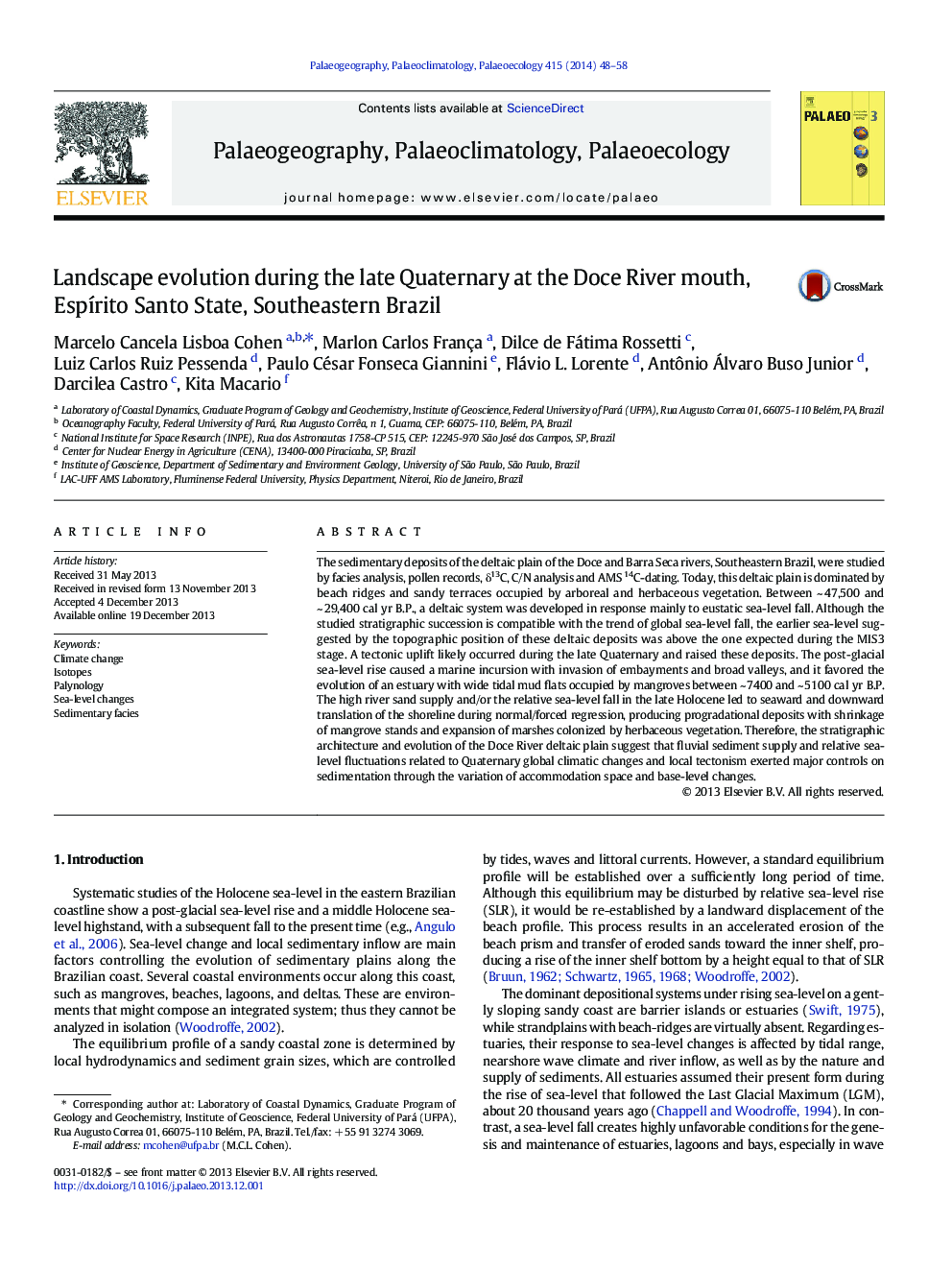| کد مقاله | کد نشریه | سال انتشار | مقاله انگلیسی | نسخه تمام متن |
|---|---|---|---|---|
| 4466164 | 1622175 | 2014 | 11 صفحه PDF | دانلود رایگان |

• Coast from Southeastern Brazil was studied by facies analysis, pollen, δ13C and C/N.
• Between 47 and 30 cal kyr BP a delta was developed in response to sea-level fall.
• Sea-level rise favored the development of a estuary between 7.4 and 5.1 cal kyr BP.
• Sand supply and sea-level fall in the late Holocene lead to development of a delta.
• Mangroves expanded and shrank during the estuary and delta phase, respectively.
The sedimentary deposits of the deltaic plain of the Doce and Barra Seca rivers, Southeastern Brazil, were studied by facies analysis, pollen records, δ13C, C/N analysis and AMS 14C-dating. Today, this deltaic plain is dominated by beach ridges and sandy terraces occupied by arboreal and herbaceous vegetation. Between ~ 47,500 and ~ 29,400 cal yr B.P., a deltaic system was developed in response mainly to eustatic sea-level fall. Although the studied stratigraphic succession is compatible with the trend of global sea-level fall, the earlier sea-level suggested by the topographic position of these deltaic deposits was above the one expected during the MIS3 stage. A tectonic uplift likely occurred during the late Quaternary and raised these deposits. The post-glacial sea-level rise caused a marine incursion with invasion of embayments and broad valleys, and it favored the evolution of an estuary with wide tidal mud flats occupied by mangroves between ~ 7400 and ~ 5100 cal yr B.P. The high river sand supply and/or the relative sea-level fall in the late Holocene led to seaward and downward translation of the shoreline during normal/forced regression, producing progradational deposits with shrinkage of mangrove stands and expansion of marshes colonized by herbaceous vegetation. Therefore, the stratigraphic architecture and evolution of the Doce River deltaic plain suggest that fluvial sediment supply and relative sea-level fluctuations related to Quaternary global climatic changes and local tectonism exerted major controls on sedimentation through the variation of accommodation space and base-level changes.
Journal: Palaeogeography, Palaeoclimatology, Palaeoecology - Volume 415, 1 December 2014, Pages 48–58